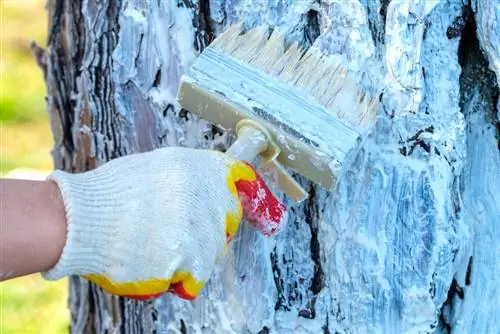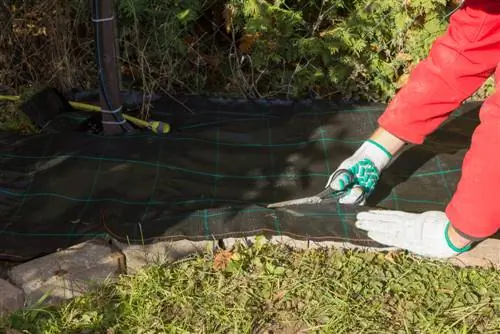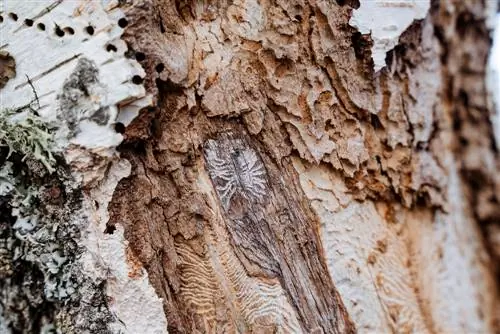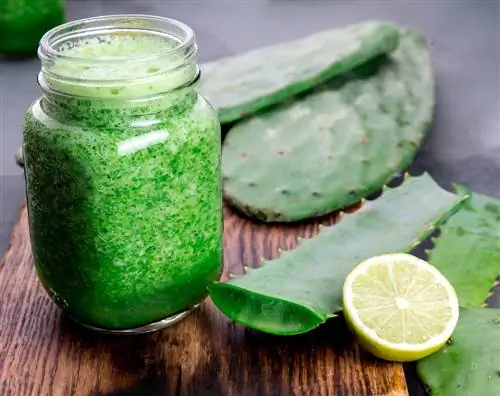- Author admin [email protected].
- Public 2023-12-16 16:46.
- Last modified 2025-06-01 06:02.
A damaged tree trunk is susceptible to diseases and pests. Don't let it get to that point. With simple measures you can protect any tree trunk from damage to the bark. Read the best tree protection tips against frost, browsing and cats here.
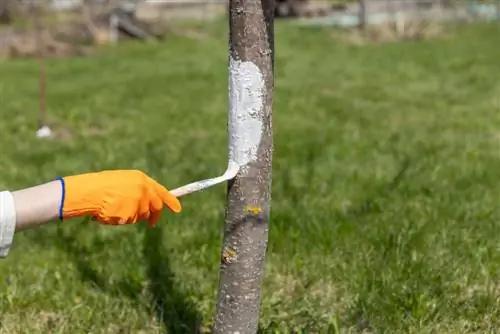
How do you protect a tree trunk from damage?
To protect a tree trunk from damage, use white paint to prevent frost, use collars or wraps to prevent browsing, and wrap the trunk with rabbit wire to keep cats out. This keeps the bark he althy and undamaged.
How can I protect a tree trunk from frost?
Awhite coat of paint is the best way to protect the tree trunk from frost. Frost cracks in the bark occur when the sun shines brightly at temperatures below freezing. Serious temperature differences arise that cause tree bark to burst. Whitewashing the trunk will reflect winter sunlight and reduce the temperature difference. How to do it right:
- Thoroughly clean the trunk of a fruit tree or ornamental tree.
- Buy lime paint on Amazon (€17.00 on Amazon) or make it yourself from clay and algae lime.
- Apply trunk protection up to the first branch fork.
How can I protect a tree trunk from browsing?
A cuff is the best protection against browsing damage to a tree trunk. You can buy theStammschonercheaply on Amazon, in a hardware store or garden center. You can protect a large, thick tree trunk against nibbling teeth with awrapping bandmade of jute, breathable fiber material or a reed mat. In practice, a tree coating with foul-smelling manure or bitter-tasting lime has proven effective as adeterrentfor deer, rabbits and grazing livestock.
How can I protect a tree trunk from cats?
You can protect a tree trunk cheaply and effectively from sharp cat claws withrabbit wire Wrap the trunk loosely with the green wire mesh, at least up to waist height. Connect the ends with floral wire. In the future, the tree trunk will no longer be used as a scratching post.
Tip
Tree bark burst - what to do?
Frost cracks, diseases and pests are common causes of cracked tree bark. Treating open tree wounds with wound closure has not proven successful in practice. Tree experts recommend trusting in the self-healing powers of the dividing tissue, the so-called cambium. Cambium takes care of the formation of wound tissue, young wood and fresh bark through intensive cell division.


